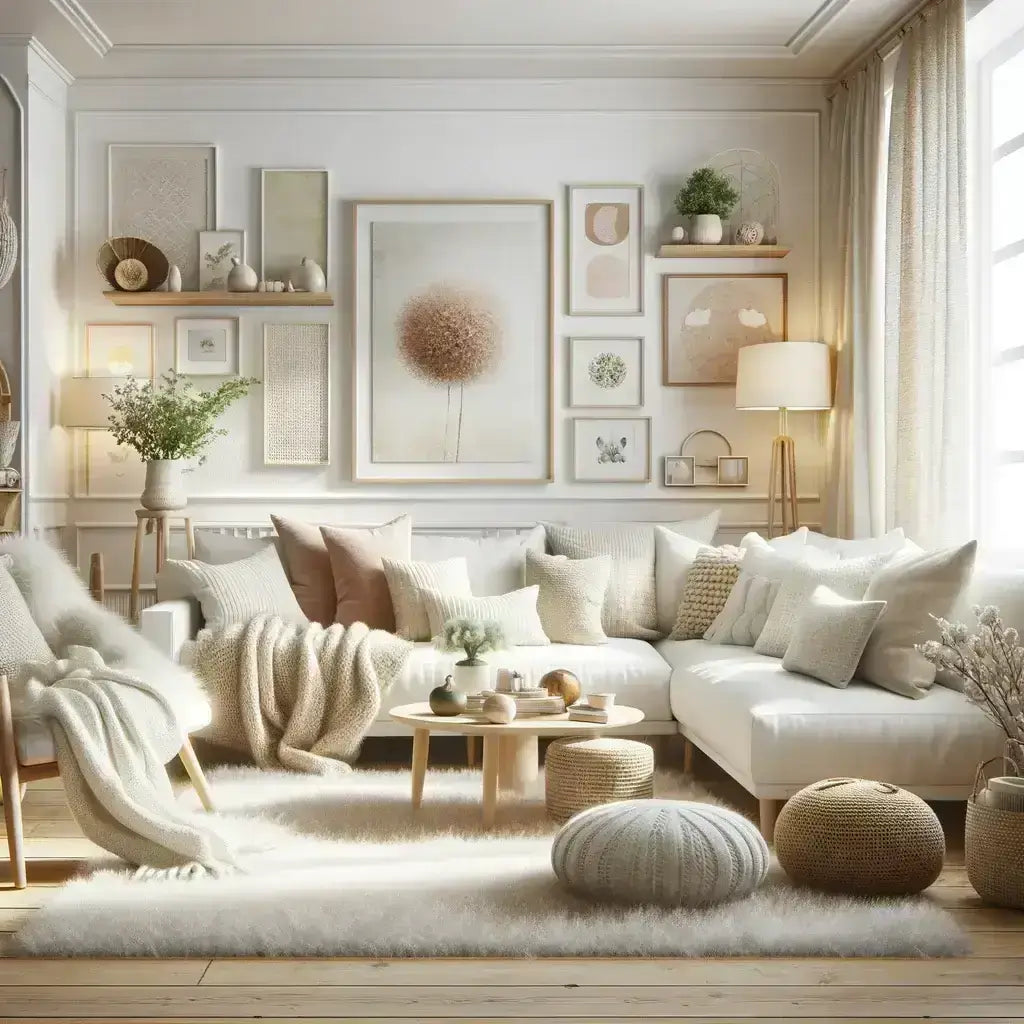
No Stupid Questions: Why Can't I Just Paint All My Walls White to Make My Room Look Bigger?
|
|
Time to read 2 min

Discover new arrivals in modern lighting, home decor, and Scandinavian design—updated weekly...
|
|
Time to read 2 min
It's a common assumption in interior design: paint your walls white to make a small room appear larger. But as I dove deeper into the nuances of color psychology today, I learned that while this method has its merits, it's not a one-size-fits-all solution. Let’s debunk the myth and explore how white walls can be styled effectively to avoid a stark, uninviting look.
White is known for its reflective qualities, which can make spaces feel more open and airy by bouncing light around the room. This is why it's often recommended for smaller, darker rooms. However, if not executed properly, a room with all-white walls can end up feeling more like a sterile box than a cozy retreat.
An all-white room without the right styling can feel impersonal and unwelcoming. The lack of color and texture can strip a room of its personality and warmth, which are essential in making a space feel inviting.
To make white walls work in your favor while keeping the room warm and engaging, consider these styling tips:
Incorporate Textures: Adding various textures can introduce depth and interest. Think soft woolen throws, plush velvet cushions, or rough natural fibers in rugs and tapestries. These elements can soften the starkness while maintaining the brightness.
Use Layers: Layering furniture and decor items helps create a lived-in look that feels cozy. Use shelves, picture frames, and decorative objects to add layers that draw the eye around the room.
Add Accent Colors: While the base may be white, introducing subtle accent colors through artwork, throws, or even a single accent wall can inject personality back into the space. These pops of color will break up the monotony without closing in the space.
Play with Light: Good lighting is crucial in an all-white room. Mix ambient, task, and accent lighting to enhance the room’s features and add warmth. Natural light is especially important, so consider using light, airy curtains or blinds.
Include Natural Elements: Incorporating elements like wood, stone, or plants can bring warmth and life to an otherwise cold space. These elements offer a soft contrast to the white while bringing an element of the outdoors inside.
Today’s lesson on the use of white in interior design taught me that while white can indeed help make a room appear larger, it requires careful styling to ensure the space remains warm and inviting. White is not just a color but a canvas, ready to be brought to life with the right textures, layers, and colors. So, the next time you’re tempted to go all white, remember it’s not just about making the room look bigger—it's about making it feel like home.